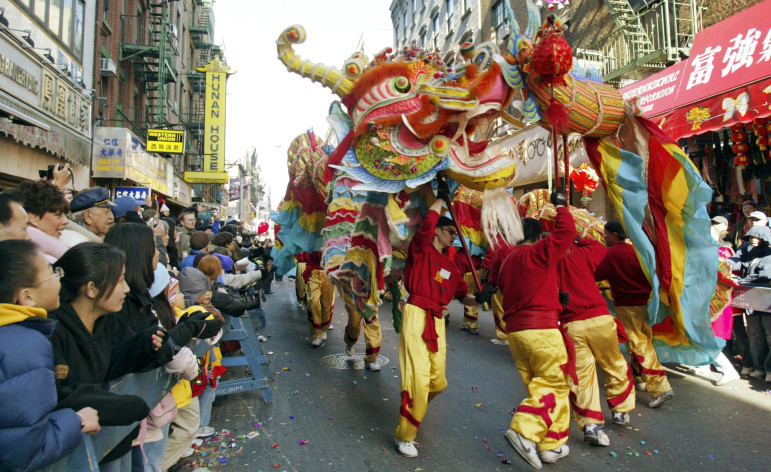
Patrick Kwang
This year, the Lunar New Year was listed as a school holiday in the city for the first time. One of the powerful arguments elected officials in the Asian neighborhoods made was that in neighborhoods like Chinatown, the classrooms were already largely empty on the holiday anyway.
We New Yorkers like to call the city we live in and love a melting pot. But we are constantly reminded that the city is more like a salad bowl—people from different parts of the world co-exist here but the divider between “we” and “they” has never really dissolved.
Nothing is a better barometer than the school system. An analysis conducted by the education news website Chalkbeat in January found only two of the city’s schools have student bodies as diverse as the city’s demography. And a study released in December by the Center for New York City Affairs at the New School found the majority of the public primary schools in the city have more than 90 percent minority students. Eight percent of these schools have a smaller proportion of white students than the surrounding neighborhoods, indicating white families in the neighborhoods have sent their children somewhere else.
The findings align with some previous studies, including one released by the Los Angeles’ Civil Rights Project at the University of California in 2014 that found that by 2009 schools in New York are the most segregated in the country.
Through the years the city has tried to change the situation. That has included the School Diversity Accountability Act last year to require the Department of Education to do an annual report on school demographic data and to figure out ways to improve diversity.
But clearly it is not the priority of the DOE. New York City’s Schools Chancellor Carmen Farina explained at a recent roundtable meeting for ethnic media reporters that elementary schools are zoned and are destined to have many students from the same racial and cultural backgrounds. “For many parents that’s comforting,” said the Chancellor.
She said middle schools and high schools are more diverse because many of them are open choices. And all in all, “Parents want good teachers and principals who understand and respect them. That’s right now one of the focuses that we have.”

No Backspace is City Limits' new blog featuring a recurring cast of opinion writers passionate about New York people, policies and politics.
I don’t agree with the chancellor that middle schools and high schools are less of a concern in terms of diversity. After all, the top specialized high schools have also been criticized for having too few black and Hispanic students. Still, the Chancellor’s words are a relief. At least she seems to understand something that some academic researchers may not: For many minorities, especially new immigrant parents, understanding and respect sometimes are more likely to come from a segregated school than a diverse school. So other than the segregated neighborhoods and “white flight,” the voluntary choice of some minority parents may also be a factor that contributes to school segregation in the post Brown v. BOE era.
Most of the studies didn’t consider Asian students in their findings, most likely because the model minority stereotype has made Asians less of a “minority” – especially when tests performance comes into the equation. But schools in the predominantly Asian neighborhoods like Chinatown are undoubtedly among the top tier of segregated schools in the city – some have around 90 percent Asian students.
In recent years, surging real estate prices have accelerated the gentrification in Chinatown. But a decrease in the population of Chinese new immigrants hasn’t left big marks on the demographics of the schools here, not only because many newly arrived white yuppies are not parents yet, but also because many Chinese who are pushed out of the area still have their children remain in the same schools.
Even those who have never set a foot in Chinatown sometimes use addresses of relatives or friends here to register their children for a school. And let’s not forget those who landed in Flushing, Queens and Sunset Park, Brooklyn – they have formed new Chinatowns accompanied by Asian concentrated schools.
To new immigrant parents, sending their children to schools where most students, parents, and even teachers and principals speak their language and understand their culture is, as the Chancellor said, comforting. But the benefits of voluntary segregation in schools are far beyond this.
This year, after a long fight by the Asian community, the Lunar New Year was listed as a school holiday in the city for the first time. One of the powerful arguments elected officials in the Asian neighborhoods, who led the battle, put in front of the city was that in neighborhoods like Chinatown, the classrooms were already largely empty on the Lunar New Year anyway.
A mixed neighborhood and school are certainly most people’s dream. But the reality is neighborhoods with a preponderance of people from certain racial backgrounds often provide the only platform for minorities to flex their political power and fight for their own interests. Schools are the same.
On February 8, the first day of the Year of Monkey I met Eddy Peralta, a 13-year-old from the Liberty Avenue Middle School in Brooklyn who came to see the firecracker ceremony at the SDR Park, with his mother who had briefed him about the zodiac signs in the Chinese culture. Peralta said that although there was no school that day, he learned more on the streets of Chinatown than he could in a classroom. To have a day off on the Lunar New Year “is a great idea,” said Madeline Plasencia, the mother. “People are comfortable to stay in our own culture. This helps us to go out to see other cultures.”
The fruit of school segregation contains seeds of diversity. Isn’t this the most beautiful thing we can harvest in this imperfect world?
Your City. Your News.
Your City Limits!








3 thoughts on “No Backspace:
The Truth of Voluntary Segregation in City Schools”
There was no such thing as White flight, instead parents saw the next
generation of kids on a JAIL track instead of a college track and moved,
and so did blacks…..
True. It was more of middle-class flight in the 1970s.
The reason you have a salad bowl and not a melting pot is because the left has been given free reign to call assimilation a “hate crime” and instruct minorities that attempting to emulate whites (and ONLY whites) is hatred of their “own kind”. The left calls this bag of hate “multiculturalism”.
Republicans COULD have mounted a full-throated defense of the concept of a unifying American culture, and pointed out that multiculturalism only leads to balkanisation, while assimilation leads to productive mutli-ethinic societies that live peacefully. But no, low tax rates (without ever cutting the spending), open borders, and so-called “free” trade were the only things worth fighting for from that crowd.